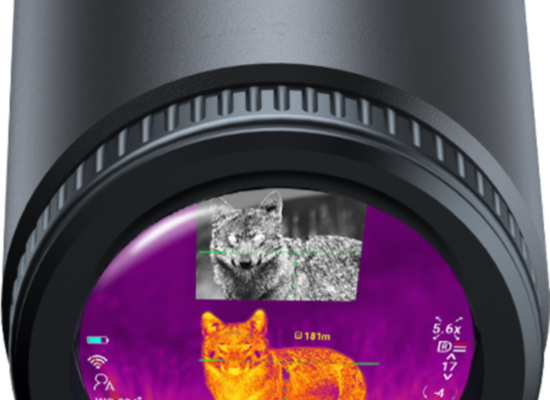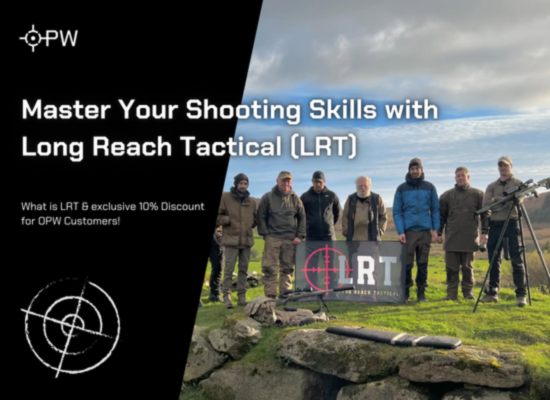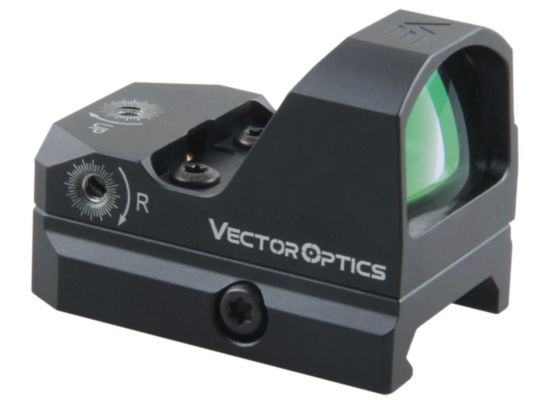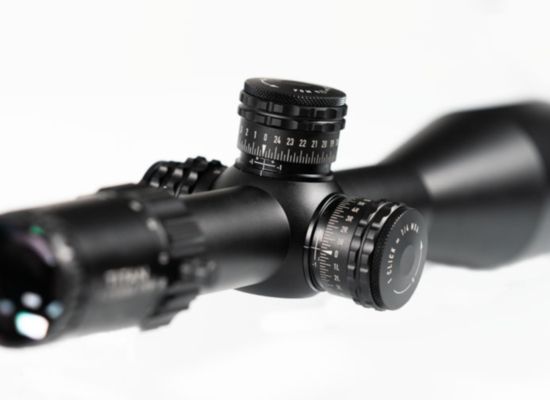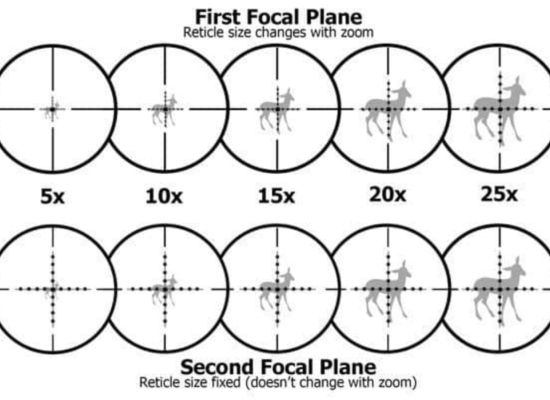FREE UK DELIVERY ON ORDERS OVER £150 (BY ROYAL MAIL TRACKED 24)
Choose Paid Option for DPD Express
Choose Paid Option for DPD Express
Contact Us
Account
Account
CUSTOMER LOGIN
Skip to Content
Welcome back!
If you have an account with us, please sign in.
NEW CUSTOMERS
Create an account to get exclusive offers!
- Air Gun Compressors
- Ammo Storage
- Bags, Cases and Slings
- Batteries and Power Packs
- Bipods, Tripods and Shooting Rests
- Gun Cleaning
- Lighting
- Protection
- Reloading
- Rifle Stocks
- Surveillance
- Cool Gear
- Targets
- Tools
- Watches
- Books and Media
- One Piece Rings
- Two Piece Rings
- Extended
- Cantilever
- Adjustable / MOA
- Quick Release
- Special Receivers (Tikka, Sako, CZ, Ruger, etc)
- Parts (Screws, Ring Caps, MOA Inserts)
- One Piece Bases
- Two Piece Bases
- Picatinny Rails
- Shotgun Bases
- Red Dot Bases and Interfaces
- Nightvision and Thermal Scope Bases
- MOA Adjustable Rails
- Railed Scope Base Systems
- Bubble Level Rings
- Bubble Level Rails
- M-LOK Rails
- Arca Mounts
- Picatinny Ring Caps
- ACI and Mirage Interfaces
- Snap In Adaptors
- Bipod Mounting Systems
- Magnifier Mounts (Flip 2 Side)
- Belts and Straps
- Bullet Holders
- Drag Bags
- Case / Mat Combos
- Gun Slings, Holsters and Swivels
- Hard Gun Cases
- Miscellaneous Bags and Holders
- Range Bags and Holdalls
- Rucksacks
- Shooting Mats
- Silencer Covers
- Waist Bags and Pouches
- Bipods
- Bipod Accessories
- Monopods
- Rest Bags
- Shooting Rests
- Shooting Sticks (Mono, Bi, Tri, Quad)
- Tripods
- Tripod Adapters
- Tripod Heads
- Tripod Weapons Supports
- Bore Guides
- Brushes, Jags and Mops
- Cleaning Cloths and Patches
- Cleaning Hand Tools
- Cleaning Kits
- Cleaning Liquids
- Cleaning Rods
- Boresighters
- Bubble Levels and Levelling Kits
- Chronographs
- Gun Vises
- Gunsmithing
- Mounting Kits
- Screwdriver Kits
- Target Camera Systems
- Satellite Communicators
- Torque Wrenches
- Trigger Pull Gauges
- Wind Meters
- Night Vision Rifle Scopes
- LRF Night Vision Rifle Scopes
- Night Vision Add Ons
- Add On Collars
- Nightvision And Thermal Bundles
- Thermal Rifle Scopes
- LRF Thermal Rifle Scopes
- Thermal Add Ons
- Add On Collars
- Nightvision And Thermal Bundles
- One Piece Rings
- Two Piece Rings
- Extended
- Cantilever
- Adjustable / MOA
- Quick Release
- Special Receivers (Tikka, Sako, CZ, Ruger, etc)
- Parts (Screws, Ring Caps, MOA Inserts)
- One Piece Bases
- Two Piece Bases
- Picatinny Rails
- Shotgun Bases
- Red Dot Bases and Interfaces
- Nightvision and Thermal Scope Bases
- MOA Adjustable Rails
- Railed Scope Base Systems
- Belts and Straps
- Bullet Holders
- Drag Bags
- Case / Mat Combos
- Gun Slings, Holsters and Swivels
- Hard Gun Cases
- Miscellaneous Bags and Holders
- Range Bags and Holdalls
- Rucksacks
- Shooting Mats
- Silencer Covers
- Waist Bags and Pouches
- Bipods
- Bipod Accessories
- Monopods
- Rest Bags
- Shooting Rests
- Shooting Sticks (Mono, Bi, Tri, Quad)
- Tripods
- Tripod Adapters
- Tripod Heads
- Tripod Weapons Supports
- Bore Guides
- Brushes, Jags and Mops
- Cleaning Cloths and Patches
- Cleaning Hand Tools
- Cleaning Kits
- Cleaning Liquids
- Cleaning Rods
 KLARNA AVAILABLEOn All Products!
KLARNA AVAILABLEOn All Products! 5 STAR REVIEWS99% 5* Trustpilot Reviews
5 STAR REVIEWS99% 5* Trustpilot Reviews  EXCHANGE GUARANTEE90 day scope out guarantee
EXCHANGE GUARANTEE90 day scope out guarantee FAST DISPATCHFast delivery on in-stock items
FAST DISPATCHFast delivery on in-stock items MAKE AN OFFERName Your Price eBay style!
MAKE AN OFFERName Your Price eBay style! 
Tactical Scope Blog
CATEGORIES
CATEGORIES
- All
- Red Dots (6)
- Shooting Accessories (16)
- New Products (36)
- Binoculars (8)
- Stalking (12)
- Rucksacks & Drag Bags (3)
- Field Target (9)
- Giveaway & Competitions (1)
- Recommended (30)
- Shooting Comps (19)
- Tips (40)
- Clothing (1)
- Foxing (4)
- Scope Mounts (11)
- Competition Past Winners (1)
- HFT (3)
- Scope Mounts (7)
- OPWTV (125)
- Rifle Stocks (2)
- Ammunition (2)
- Events (9)
- Monoculars (8)
- Long Range (21)
- The Optics Warehouse Podcast (1)
- Gallery Rifle (3)
- Air Rifle Confidence Bootcamp (12)
- Air Rifle Plinking Guide (2)

Featured
5 Backyard Plinking Targets You Can Make in 5 Minutes
5 Backyard Plinking Targets You Can Make in 5 Minutes
Plinking is all about fun, creativity, and enjoying your time outdoors — and the best part? You don’t need fancy targets to get started. In fact, you can whip up some exciting and effective backyard plinking targets with stuff you already have around the house. Think of it as crafting your own shooting gallery, where each target offers a new challenge and a satisfying “plink!” sound when hit. In this post, I’ll share 5 super easy DIY targets you can make in 5 minutes or less to amp up your backyard shooting sessions.
Accessories? Maybe a bipod or shooting rest bag? See HERE
1. Tin Can Tower — Classic and Satisfying
Nothing beats a classic stack of empty tin cans for plinking. Their light metal clangs make every hit feel rewarding.
> Gather 5–10 empty tin cans, rinse them out, and stack them pyramid-style on a sturdy surface.
> Arrange them on a wooden pallet or flat ground with a solid backstop behind.
> Tip: Use cans of different sizes for a varying challenge.
> Tip: Spray-paint cans bright colors to improve visibility and add a fun twist.
Statistic: Studies show that multi-target setups improve shooter focus and engagement by 27%.
>“A simple tin can stack is the ultimate beginner’s plinking target — cheap, reusable, and rewarding,” says pro shooter Mike Lawson.
2. Water Balloon Pop — Fun and Challenging
For those hot days, water balloons are a moist surprise!
> Inflate small water balloons and hang them from tree branches or a clothesline.
> Shoot with low-powered air rifles to safely knock them down.
> Always ensure the area is safe and clean after the session.
> Tip: Use brightly colored balloons for better aiming.
Statistic: Interactive targets like balloons boost accuracy improvement by 18% in beginners.
> Shooting sports coach Lisa Nguyen adds, “Reactive targets like balloons teach shooters to focus on precision under dynamic conditions.”
3. Paper Plates — Cheap and Customizable
Paper plates are great for quick, disposable targets.
> Tape them to a wooden board or fence.
> Use markers to draw bullseyes or fun shapes to aim at.
> Replace quickly once shot through.
> Tip: Vary target distances to practice different shooting ranges.
Statistic: Visual targets with repetitive patterns enhance muscle memory development by 23%.
> “Paper plates add a visual challenge without any expense. Perfect for quick sessions,” shares beginner plinker Sarah K.
4. Plastic Bottles Filled with Sand — Steady but Knockable
Fill empty plastic bottles with some sand or rice for a sturdier yet still knockable target.
> Arrange them in rows or patterns on a bench or ground.
> Their weight keeps them from blowing away while allowing them to topple when hit.
> Tip: Use recycled bottles to stay eco-friendly.
Statistic: Weighted knockdown targets keep beginners engaged 20% longer per session.
> Environmental shooter and blogger Tom Ellis notes, “Recycling bottles into targets is great for sustainability and fun.”
5. Aluminum Foil Targets — Buzzing for Accuracy
Shape small balls or stars out of aluminum foil and tape them to flat surfaces.
> These smaller, reflective targets improve precision and focus.
> The foil’s shine catches your eye and signals a direct hit with a pleasant crinkle sound.
> Tip: Create several foil targets at different heights to simulate varying shot angles.
Statistic: Precision-focused targets boost accuracy improvements by up to 30% in intermediate shooters.
> “Aluminum foil targets are perfect for those wanting to push their precision skills,” says air rifle competitor Anna Martinez.
Conclusion
With just a few minutes and common household items, you can transform any backyard into a plinking playground. These DIY targets not only add variety and fun but also help sharpen your aim and keep your shooting sessions fresh. Why buy expensive targets when creativity is your best gear? Grab your air rifle, set up these quick projects, and start plinking your way to better skills and bigger smiles!
FACT: Studies show DIY and interactive shooting targets increase engagement and retention rates among beginner shooters by over 25%, providing a more enjoyable learning curve.
Here are some more (or less!) fanciful ideas!
READ ARTICLE

Featured
New to Air Rifle Plinking? Discover Why It’s the Perfect Way to Enjoy Your Backyard and Sharpen Your Aim!
New to Air Rifle Plinking? Discover Why It’s the Perfect Way to Enjoy Your Backyard and Sharpen Your Aim!
Think of air rifle plinking as the backyard’s version of a mini-adventure — a fun, safe way to practice your shooting skills while enjoying the fresh air and a bit of friendly competition. Whether you’re a complete beginner or just looking for a casual way to unwind, plinking is all about having fun, building confidence, and improving accuracy one shot at a time.
What is Air Rifle Plinking?
Plinking means shooting at informal targets, like cans or bottles, set up at various distances in your backyard or local shooting range. It’s low-pressure and super flexible — you can make your own targets or buy specialized ones, and try different shooting positions or distances to keep things interesting.
Why Beginners Love It
For newbies, plinking is perfect because it doesn’t require expensive gear or a fancy setup. It’s a great way to get comfortable with an air rifle, practice safety skills, and improve your aim without the intensity or rules of formal target shooting.
Safety First — Always
Before any plinking session, set up a safe shooting area where stray pellets won’t cause harm. Remember to wear eye protection, use a backstop behind your targets, and ensure bystanders are at a safe distance.
Gear Up for Success
Start with a reliable air rifle suited for beginners — something lightweight but accurate. As you progress, consider accessories like scopes and bipods to enhance your precision and comfort.
Get Creative with Targets
The fun part? Creating your own shooting challenges! Use tin cans, plastic bottles, paper targets, or even reactive steel targets that make satisfying sounds when hit. Change up your target arrangement to keep your sessions fresh and engaging. We don't stock any targets at the moment and frankly don't need to. Check out our ideas on DIY targets here
Tips to Improve Your Plinking Skills
Practice regularly to build muscle memory and confidence
Focus on your breathing and trigger control for consistent shots
Experiment with different shooting positions to find what works best
Keep track of your progress by marking scores or grouping shots
Ready to enjoy countless hours of backyard fun while sharpening your aim? Air rifle plinking is your ticket to a rewarding and relaxing new hobby. Stay safe, have fun, and watch your skills soar!
Product types to check out? Obviously rifle scopes but also a Bipod is a great range accessory you should have. See loads of Bipods HERE
READ ARTICLE

Featured
UK air rifle care, troubleshoot spring airgun, springer rifle repair, springer air rifle, mainspring replacement, how to fix spring gun, fix air rifle twang, airgun maintenance, air rifle spring problems
Air Rifle Confidence Bootcamp Part 12: Springer Air Rifle Spring Problems
.blog-post {
font-family: Arial, sans-serif;
color: #333;
max-width: 850px;
margin: 0 auto;
padding: 20px;
background-color: #fff;
}
.blog-post h2, .blog-post h3 {
color: #b00020;
font-weight: bold;
margin-top: 24px;
margin-bottom: 12px;
}
.blog-post h2 {
font-size: 1.5rem;
}
.blog-post h3 {
font-size: 1.25rem;
}
.blog-post p {
font-size: 1rem;
line-height: 1.6;
margin-bottom: 16px;
}
.blog-post ul {
padding-left: 20px;
margin-bottom: 16px;
}
.blog-post li {
margin-bottom: 8px;
}
Troubleshooting Springer Air Rifle Spring Problems
If you're using a spring-powered air rifle (commonly called a “springer”), understanding and identifying spring-related issues is crucial for long-term accuracy and performance.
While springers are known for their simplicity and reliability, the mainspring inside does a lot of work—and when things go wrong, it usually shows up in your accuracy or shot feel. ...this has caused a few "scope is faulty" returns when it was the rifle.
In this post, we’ll help you recognise the most common spring problems and explain how to fix or avoid them.
1. Weak or Broken Spring
Symptoms:
Noticeable drop in pellet velocity
Shots falling short at distances the rifle previously handled easily
More mechanical “twang” or vibration
What’s happening: The mainspring may have weakened with use or snapped entirely. This reduces energy transfer and leads to inconsistent power.
Fix: A spring replacement is often needed. While some experienced shooters handle this themselves, beginners are better off going to a qualified airgun technician or gunsmith. Use a high-quality replacement spring designed for your model for best results.
2. Twangy Recoil and Vibration
Symptoms:
Sharp, buzzy recoil when firing
Unpleasant vibration felt through the stock
Increased noise with each shot
Cause: The spring is vibrating side-to-side inside the piston chamber. This is common with loose-fitting or dry springs.
Fix: Apply proper spring grease or tar-like damping compound to reduce vibration. You can also add a spring guide or top hat to keep the spring aligned inside the tube. These small upgrades make a huge difference to the shot cycle and noise level.
3. Spring Set or Loss of Preload
Symptoms:
Gradual drop in power over time
Rifle feels easier to cock than before
Less snappy recoil
Cause: The spring has "set", meaning it's permanently compressed and has lost some of its stored energy. This happens naturally over many cycles or if the rifle is stored cocked for long periods.
Fix: You may need to replace the spring or install preload spacers if performance is declining. Some rifles benefit from a tuning kit that restores or even improves original power.
4. Noisy or Inconsistent Action
Sometimes the rifle just doesn't sound or feel right when you shoot it. This can be caused by worn spring ends rubbing against the piston, or dry contact points in the powerplant.
Fix: A full internal inspection may be necessary. Applying a thin layer of moly grease to the spring and guides often quiets the action and restores consistency.
Best Practices to Prevent Spring Issues
Never store your rifle cocked—it puts strain on the spring
Keep internals dry and lubricated with airgun-safe products
Use quality pellets to avoid excessive internal wear
If your rifle feels off, stop shooting and inspect before damage worsens
With proper care and attention, your springer rifle can deliver years of reliable service. And if problems do arise, you’ll now have a better idea of what’s going on and how to fix it.
Helpful Guides & Resources
Looking to get hands-on or go deeper? Here are some excellent resources:
Springer Rifle Disassembly Guide (Gateway to Airguns)
Spring Gun Tuning: Cleaning & Deburring (Pyramyd Air)
How to Lubricate a Spring-Piston Rifle (Pyramyd Air)
Final Tip
If you’re unsure how to replace or check your mainspring, consult a qualified gunsmith or airgun technician. This ensures safe performance and avoids damaging your rifle further.
Always ensure your rifle is unloaded and safe before performing maintenance.
Course Menu - Air Rifle Confidence BootcampPrevious - Part 11 - Troubleshooting Common Air Rifle Issues for BeginnersNext - That's all for now!
READ ARTICLE

Featured
Transforming Night Hunting with the HIKMICRO Alpex 4K Lite
A Lighter, Smarter Scope for Airgun Hunters
The evolution of night vision optics has brought us a new standout contender: the HIKMICRO Alpex 4K Lite. Designed specifically with airgun and rimfire shooters in mind, this streamlined scope delivers power, performance, and precision, all wrapped up in a compact, affordable package.
Unlike bulkier digital scopes, the Alpex 4K Lite was developed with direct input from airgun hunters. The result is a device that strips away unnecessary extras while keeping the key features that matter most in the field.
Built for Airgun Pest Control
In the Field Sports Britain video, shooting legend Terry Doe takes the Alpex 4K Lite into the field for some real-world rabbit control. The scope’s day/night mode, IR illumination, and laser rangefinder come into their own as daylight fades.
Even as dusk sets in, the Lite delivers a clear, bright image; allowing accurate target ID and confident shot placement at ranges well beyond 50 yards. With a slim profile and intuitive controls, the scope is easy to handle on the move, especially when stalking skittish rabbits.
Why Airgunners Are Switching to the Lite
The Alpex 4K Lite isn’t just about cutting weight, it’s about making serious tech usable for smaller setups. Here’s what makes it ideal for airgun pest control:
Compact and Lightweight: Weighs just 474g without battery, perfect for rimfires and sub-12ft-lb air rifles.
4K Ultra HD Sensor: Delivers razor-sharp detail, day or night.
Ballistic Calculator: Inputs your data for accurate holdover at various distances.
Laser Rangefinder (LRF): Built-in ranging up to 1000m.
Day/Night Versatility: Seamless switching between modes for 24-hour capability.
Terry Doe’s Verdict: "I’m Buying One"
Terry’s seal of approval is more than just lip service, as he ends the video stating clearly that he’ll be buying one himself. From a man who’s tested more optics than most of us have had hot dinners, that’s a strong endorsement.
For pest controllers, especially those targeting rabbits around stables or farmland, the Alpex 4K Lite offers enough range, clarity, and battery life to get the job done efficiently and humanely.
Final Thoughts
The Alpex 4K Lite isn’t a watered-down version of a better scope, it’s a purpose-built tool that finally brings high-end features to airgun hunters without the bulk or price tag of a full-sized digital optic.
If you’re looking for an ultra-capable night vision scope that feels right at home on a lighter rifle, this might just be the one.
Shop the HIKMICRO Alpex 4K Lite now or watch the full Field Sports Britain video to see it in action. We've embedded it below:
READ ARTICLE

Featured
trigger control, shooting stance, shooting fundamentals, improve air rifle accuracy, how to shoot an air rifle, breathing technique shooting, beginner shooting guide, airgun technique, airgun accuracy, air rifle shooting tips
Air Rifle Confidence Bootcamp Part 6: Shooting Technique Accuracy Fundamentals
.blog-post-technique {
font-family: system-ui, sans-serif;
color: #222;
max-width: 800px;
margin: 0 auto;
padding: 1rem;
background-color: #fff;
}
.blog-post-technique h2,
.blog-post-technique h3 {
color: #b00020;
font-weight: 700;
margin-top: 1.5rem;
margin-bottom: 0.5rem;
}
.blog-post-technique h2 {
font-size: 1.75rem;
}
.blog-post-technique h3 {
font-size: 1.3rem;
}
.blog-post-technique p {
font-size: 1rem;
line-height: 1.6;
margin-bottom: 1rem;
}
.blog-post-technique ul {
padding-left: 1.2rem;
margin-bottom: 1rem;
}
.blog-post-technique li {
margin-bottom: 0.5rem;
}
.blog-post-technique blockquote {
border-left: 4px solid #b00020;
margin: 1rem 0;
padding: 0.5rem 1rem;
background: #fff0f0;
color: #444;
}
Shooting Technique & Accuracy Fundamentals for New Air Rifle Shooters
So you've chosen your air rifle, sorted your pellets, and found a legal place to shoot. Now it's time to hit what you’re aiming at — consistently.
Good shooting isn’t about luck or scopes and sights (to be covered in depth in other artcleses). It’s about repeatable technique. This post covers the fundamentals that new shooters need to master accuracy from day one.
1. Shooting Position & Stability
Whether you’re shooting standing, prone, or from a bench, your goal is stability. If you wobble, so will your shot.
Prone: offers the most stability and is great for target practice.
Seated at a bench: ideal for zeroing and casual shooting.
Standing: the least stable but good for field practice or hunting.
Tip: Use a bipod, sandbag, or rest to reduce movement.
2. Correct Rifle Hold
Don’t grip your air rifle like a shotgun or hunting rifle. Air rifles are sensitive to hold, especially springers.
Keep your leading hand relaxed, supporting the fore-end (not gripping hard).
Rest the butt of the rifle snugly into your shoulder.
Maintain a gentle but secure grip with your trigger hand.
This is often called the “artillery hold” — let the rifle recoil naturally.
3. Breathing Control
Breathing affects aim more than you think.
Take a deep breath.
Let it out slowly.
Pause halfway through your exhale and hold briefly — that’s your shot window.
Don’t hold your breath too long or rush the shot.
4. Trigger Technique
Yanking the trigger ruins accuracy.
Place the pad of your index finger on the trigger — not the joint.
Apply gentle, straight-back pressure.
Don’t “jerk” or anticipate the shot — it should come as a surprise.
Practice this dry (unloaded) before live firing.
5. Follow-Through
The shot doesn’t end when the pellet leaves the barrel.
Keep your eye on the target.
Maintain your position.
Resist the urge to drop the rifle or look up.
Follow-through is crucial for diagnosing shots and building muscle memory.
6. Practice with Purpose
Random plinking can be fun, but deliberate practice improves accuracy.
Use targets with defined bullseyes and scoring zones.
Track your groups and aim for consistency before chasing perfection.
Focus on one skill at a time — hold, breathing, trigger, or follow-through.
Download free targets here
Final Thoughts
Accuracy isn’t about the latest gear or luck — it’s about technique. Nail these fundamentals and your air rifle will reward you with tight, repeatable groups.
Remember: slow is smooth, smooth is accurate.
Course Menu - Air Rifle Confidence BootcampPrevious - Essential accessories and set up for beginnersNext - Scopes & Sighting Systems Explained for Air Rifle Beginners
READ ARTICLE
Finance is provided by Omni Capital Retail Finance Ltd which is a credit provider/lender. Tactical Scope does not receive payment for introducing customers to Omni Capital Retail Finance. Omni Capital Retail Finance Ltd finance options are subject to individual status; terms and conditions apply. Omni Capital Retail Finance Ltd is registered in England and Wales with company number 7232938. Registered address: 10 Norwich Street, London, EC4A 1BD.
Authorised and regulated by the Financial Conduct Authority, Firm Reference Number: 620615.







